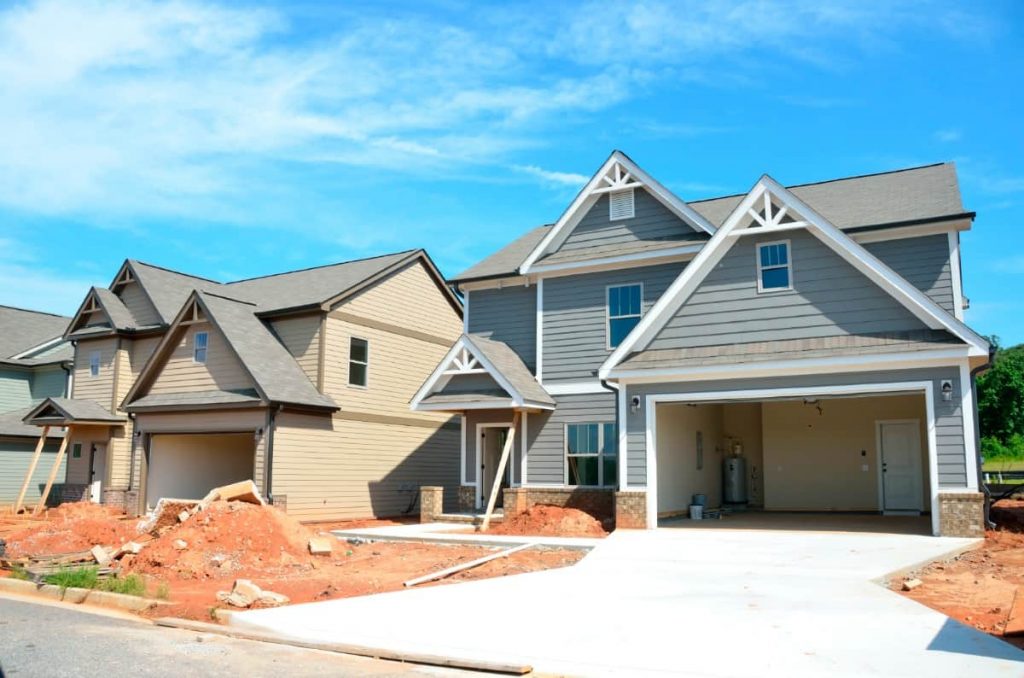In the midst of the last recession that crippled the U.S. real estate economy, new construction home inspections virtually disappeared. For several years there was too much available housing inventory at too low a price to make newly constructed homes competitive on cost. Essentially, buying a prebuilt house was more attractive to home buyers than building one.
However, now with skyrocketing real estate markets in many parts of the country, new construction is back in full swing and once again raises a question for new home buyers: should I bother hiring a home inspector for new construction?
If you’re considering whether or not you should hire a home inspector for a newly constructed home, here are some common mistakes that can happen with new constructions that may help you make up your mind.
Common Mistakes with New Home Construction
- Incorrect installation of the roof, which results in the newly constructed house requiring a completely new roof.
- The mechanical room or space was built too small and cannot fit all the appliances, including the furnace, water heater, pressure tank, etc.
- The home is not correctly insulated, resulting in tearing out finished walls and ceilings to fix it, especially in some inaccessible sections of the roof.
- The siding of the house is improperly installed and ends up needing to be replaced.
- Forgot to insulate the basement walls, which is particularly important in colder climates.
- If crawl space ventilation is not installed, water from condensation can build up and cause a lot of damage.
- Improper insulation around recessed lighting which results in air leaks and heat loss.
- Water damage can even occur from something like a leaking booster pump, which could cascade into a whole list of repairs to be made including replacing hardwood floors.
- In extreme cases, structural engineers may even have to be called in to evaluate and recommend repairs for structural issues, such as with a damaged roof truss system, or an unusual floor frame configuration.

You may be getting the picture of why it’s strongly recommended to get a home inspection on new construction. A house is a complex system of many variables that if done incorrectly or simply left out, could result in future damage to the home and you stuck paying for the bill.
According to the National Association of Home Builders, more than 3,000 components are employed in constructing a house. That is a lot of parts and that number does not even include the fine detail of how critical components such as screws, nails, adhesives, and sealants are selected and installed.
These 3,000 components are likely to be installed by roughly 20 different sub-contractors and each sub-contractor may employ as many as 4 to 5 different employees working on the house. Upon completion, your house could have had more than 100 different people touching the more than 3,000 components, including sub-contractors for things such as roofing, framing, painting, drywall, electrical, flooring, appliances, insulation, etc.
Aren’t All New Construction Homes Built to Code?
The house is built to code so it should be fine, right? Below are four critical points to understand how building code impacts residential house construction.
1. Codes for New Construction Homes Are Just a Bare Minimum
The first thing you should understand about building codes is they are basically a set of minimum standards by which constructing a home to any lesser degree is essentially illegal. So building new constructions to local building codes is simply complying with local minimum standards. These codes do not guarantee that “best practices” are used in constructing the house.
2. New Home Construction Varies Regionally
Building codes are based on national standards, and quality construction varies largely across the U.S. Such as you do not want to construct a house in Tampa, Florida in the same way you would build a house in the mountains of Denver, Colorado. Building codes do adjust for this with the different wind, climate, and seismic zones, but the nuance of regional construction methods, materials, techniques, and environmental challenges makes it difficult for codes to be adopted perfectly to localized standards and necessities.
3. Building Officials Have Very Little Time for New Home Constructions
The degree to which local building officials are able to check on new construction will vary by city, state, and county. However, overall building inspectors and building departments have largely been overworked and use a fee structure for permits that is not adequate for detailed on-site inspection of every system. Though it should be noted that local building codes and local code enforcement do help with the inspection of the structure and wiring in houses.
There are over 3,000 components on a house that requires inspecting. Given the average on-site time for building officials during the construction of a residential house is less than 4 hours, it is no wonder that some things are missed.
4. Building Codes Defer to Manufacturer’s Specifications
Many important house systems such as roofs, siding, and furnaces need to be installed according to manufacturer’s specifications. The building code may have some basic standards, but proper installation will require following the directions from manufacturers. Generally, there is nobody checking to confirm if these systems were properly installed.
Building codes and building departments do an excellent job in helping to ensure that safe and reliable houses are being constructed. However, houses are very complex systems comprised of many components that are installed by a small army of different contractors. Even the best builders with the best intentions will have difficulty executing everything on a residential build. There is a huge gray area of workmanship that exists between building codes and best practices. It simply cannot hurt to have a fresh set of eyes look over the house to confirm the newly constructed home is in good shape.
New Construction Home Inspection
A good home inspection on new construction will give you the benefit of a third party looking over the house. You will gain valuable insights into the houses’ attributes and vulnerabilities, as all houses have both.
A third party home inspection can add value by evaluating the overall quality and design of the building. In addition, it will give you a good idea of maintenance items to keep your eyes on, and it will almost certainly come up with a helpful list of small repair items that were overlooked.
Occasionally, significant problems are uncovered that can save the home buyer and builder thousands of dollars and the possible nightmare of litigation and complex repairs.
Source: Redfin




2 Responses
As you mentioned, it is a good idea to have an inspection on a new home, just to insure that everything was completed to expectations. We are looking to purchase our first home, we aren’t sure if we are going to buy used or new. I will have to keep these tips in mind with any decision that we end up making.
Nice article, as a homeowner, you take responsibility for your family’s health and safety, and when issues are out of your hands, you need experts who can handle the more technical matters, one of this is radon gas it can’t be detected without testing, so you’ll never know what’s it’s inside your home.